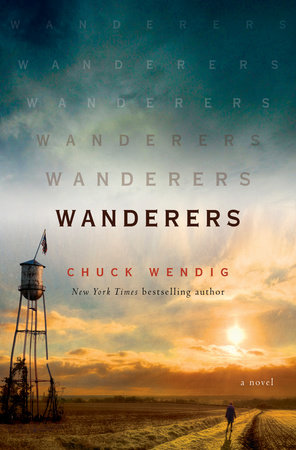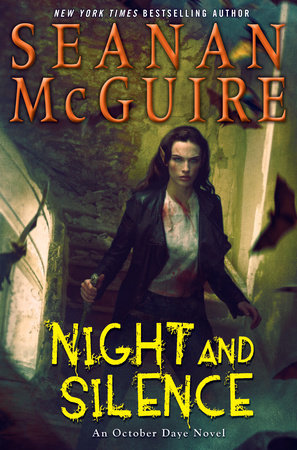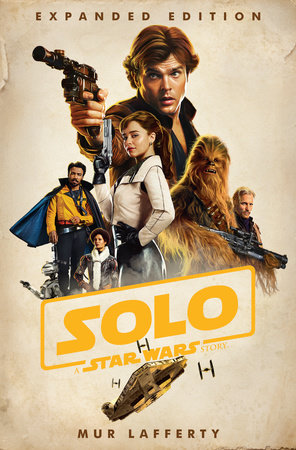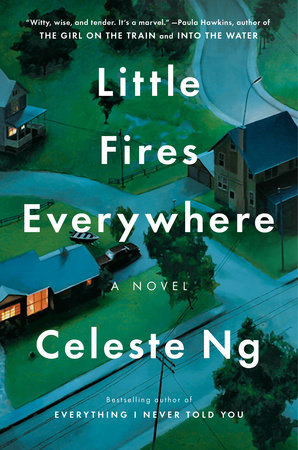This interview was done at New York Comic Con 2018.
We sat down with Peter Tieryas to talk about
Mecha Samurai Empire, alternate history, and what to eat when fighting Nazis.
Keith Rice: So Mecha Samurai Empire just came out, what can you tell us about it?
Peter Tieryas: So, it is a book about giant Mechas fighting big Nazi monsters. And it’s a very personal story in that it’s about being Asian-American, and sort of growing up in a place where, literally, on the other side of the continent there is a group of people who want to see their destruction solely based on their ethnicity. Anyone who doesn’t fit the Aryan Nazi mold should be eliminated. How do you grow up in that world, right? Like, what is your view of the world when you’re acutely aware of your race. And that became the central metaphor. The best alternate history gives us a different context and a different view of our own world. There’s a lot of entertainment, there’s a lot of action, but also, hopefully there are deeper questions about identity, about ethnicity, and about diversity. It’s also loosely inspired by
Man in the High Castle.
KR: Okay, so this is set in the world of The United States of Japan?
PT: Yep.
KR: What led you to expand on that world?
PT: When I wrote
The United States of Japan, I had a deep desire to sort of explore World War II from the Asian side. Growing up I heard all these stories about World War II from the Asian side. Just really fascinating things. And when I came to America there was nothing about this perspective, just no information available. It was always focused on more of the European side, you know? Like what happened with the Nazis, and General Eisenhower and Hitler. I kind of challenge people, how many generals do you know on the Asian side? Who were fighting the Chinese, who were fighting for the Philippines, right? Even on the American side, for the average person, there’s very little actually known about World War II. What battles do you know about? I had this desire to tell a story about that. So when I wrote it, it was very structured. It takes place over a couple of days it’s a roller coaster. You just start and it keeps on going. But when I was finished, I kind of wanted to know more about the world. What happens after those days are, right? What do people eat, how do people hang out, what’s day-to-day life in that alternate history like? That reminded me – that’s what I really wanted to know about in
Man in the High Castle as well. What is this world about?
Mecha Samurai Empire initially began as an attempt to just explore the world and see what it’s about. The very first thing I wrote was the alternate history Pledge of Allegiance, which is like, “I pledge Allegiance to the United States of Japan, and to the Empire for…” When I first wrote that, it kind of became a guiding philosophy for me. So, you’ll see, it’s like America, and it’ll feel very familiar, but at the last minute there’ll be a little twist and where you’re like, “Whoa, this is a completely different world.” They completely distorted or misinterpreted, or reinterpreted what we view as certain ideas and philosophies. That, to me, was really fascinating. So, for example, one idea that came up is that they look at
The Great Gatsby, which was written in the twenties, and it was an indictment of that era, right. But in normal history, after World War II there was the boom, and everything recovered and America became a behemoth. In the alternate history of
The United States of Japan, America lost, so there was never that boom. So, they look at Fitzgerald as almost a prophet of the end of the America. It’s stuff like that, those weird little details.
KR: Okay, so there are a lot of moving parts under the hood here. You’ve got alternate history, there’s gaming, there’s mecha. What were your biggest influences coming into this story?
PT: There’s a bunch, but I think the biggest from a story-telling perspective was Hideo Kujima. He did
Metal Gear Solid, Zone of the Enders, but what fascinated me about
Metal Gear, was that despite the title, it’s not really about metal gear. It’s about the people involved, and how they’re going to use metal gear. That, to me, was really important when I was writing about the mechas. When you watch a really good mecha movie, if it’s just about the action, the first minute is really exciting. Then after a while you start going, “Oh, I’m used to this.” And it almost becomes boring. It’s like mecha porn. Or you just become so inured to it. What really differentiates it is if you care about the characters. And I think with
Metal Gear, you go find a boss and the boss has this very strong personality and you remember their personality as you’re fighting them. In the same way I wanted these characters to be memorable. So that’s where I spent a lot of time – just really focusing on the character interactions. What does each battle mean? The way they fight, how does that represent who they are?
I also took a little bit of inspiration from “Mike Tyson’s Punch-Out!!” – the original game- because each of those characters had so much personality. So, there’s a character named Honda. He has big bushy eyebrows that he moves. And for people who know “Mike Tyson’s Punch Out!!” they know when he does the his hurricane charge, he actually takes four steps. So, they actually analyze this mecha data, and they realize, “Oh, every time he does that charge he takes four steps,” They use that to beat him. And in a little ironic twist, the “Punch Out” referee is Mario, right, he’s Italian. in the Axis world, Germany and Japan are at odds with each other, but Italy always plays the peacemaker. In the mecha tournaments, there’s an Italian guy who’s the peacemaker. That’s a nod to Mario and “Punch Out”. From a literary perspective, obviously Phillip K. Dick, that just goes without saying. Cordwainer Smith is another one, I just love his storytelling. Rieko Kodama is another. She did “Phantasy Star II.” It was one of my very first exposure to science fiction, through that video game. Where it’s actually about a Utopia that’s really cool and amazing, and then the whole Utopia starts falling apart, and then you find out at the end that humans are the bad guys.
KR: Right.
PT: That’s one of the very few instances – in a movie, book, or whatever – that I can remember, where the villains are ultimately humans.
KR: Are you planning to explore more of Mac’s story, or moving on to something else within the world of United states of Japan?
PT: Yeah, so I actually turned in the first draft of the next book to my editor. It’s a completely different story, completely new characters. It is following the aftermath of the Berkeley massacre, and the whole battle. It’s basically a revolution takes place within the United States of Japan.
KR: What three books would you recommend for fans of Mecha Samurai Empire?
PT: I would say
Sleeping Giants is a big one. I really like the works by Project Itoh. He did the adaptation of “Metal Gear Solid IV”, but also
Project Harmony and
Genocidal Organ. Those are just really great. But between those three, maybe I’d say
Genocidal Organ. It really stands out. And then, while I don’t know if it is necessarily connected to the
United States of Japan and
Mecha Samurai Empire but, Cameron Hurley’s work. I really love her work,
Apocalypse Nyx is great. And then obviously
Man in the High Castle, but, you know, that goes without saying.
KR: I’m going out on a limb and assuming you’re a gamer.
PT: Yep.
KR: What are you playing right now?
PT: We recently had a baby, so I’ve had to stop. But the last game that I played was “Spec Ops: The Line.”. That was an intense experience. That was, just, like, wow, you know? Just the world-building and everything.
KR: And that twist is just killer.
PT: Yeah, yeah. I think I finished it the week before our baby came.
“Persona V” was the big one I played before that. That just took forever but I really wanted to enjoy it. I actually played through with my wife. I was very influenced by “Persona”. What I love about the world-building in “Persona” is that you have to save the world and everything’s going to chaos, but you can also go find a really good ramen, or you can go on a date at a carnival. I love that. So, in
Mecha Samurai Empire, there are food excursions. Sure, there are Nazis, but you still have to eat, right?
Check out Peter Tieryas’ Mecha Samurai Empire!
 Keith Rice
Keith Rice is a West Virginia native and a freelance writer residing in Philadelphia with his lovely, if oft exasperated wife and three cats. Keith fosters an enthusiastic appreciation for beer and scotch, collects comics, and most importantly is an avid reader and movie lover. Oh, he’s a pretty big fan of sci-fi and fantasy as well. Drop him a line @Keith_Rice1.
 Keith Rice is a West Virginia native and a freelance writer residing in Philadelphia with his lovely, if oft exasperated wife and three cats. Keith fosters an enthusiastic appreciation for beer and scotch, collects comics, and most importantly is an avid reader and movie lover. Oh, he’s a pretty big fan of sci-fi and fantasy as well. Drop him a line @Keith_Rice1.
Keith Rice is a West Virginia native and a freelance writer residing in Philadelphia with his lovely, if oft exasperated wife and three cats. Keith fosters an enthusiastic appreciation for beer and scotch, collects comics, and most importantly is an avid reader and movie lover. Oh, he’s a pretty big fan of sci-fi and fantasy as well. Drop him a line @Keith_Rice1. 
 Keith Rice is a West Virginia native and a freelance writer residing in Philadelphia with his lovely, if oft exasperated wife and three cats. Keith fosters an enthusiastic appreciation for beer and scotch, collects comics, and most importantly is an avid reader and movie lover. Oh, he’s a pretty big fan of sci-fi and fantasy as well. Drop him a line @Keith_Rice1.
Keith Rice is a West Virginia native and a freelance writer residing in Philadelphia with his lovely, if oft exasperated wife and three cats. Keith fosters an enthusiastic appreciation for beer and scotch, collects comics, and most importantly is an avid reader and movie lover. Oh, he’s a pretty big fan of sci-fi and fantasy as well. Drop him a line @Keith_Rice1. 











 Camille Perri, author of the delightful new romantic comedy novel When Katie met Cassidy answered a few questions about New York, new love, and more.
So much loving detail is given to clothing in this novel – can you tell me a little about how you present your main characters?
I like clothes. I like fashion; particularly men’s fashion. Both my father and my grandmother on my mother’s side were tailors, so I think it’s in my blood. In terms of fiction writing, clothing serves as an efficient and fun method of characterization. You can not know a single thing about someone—a stranger who steps into a restaurant, let’s say—but their clothing tells you so much about them before they even open up their mouths to speak. Clothing reveals what a character is trying to project, as well as what they’re giving away about themselves without even realizing it: their socioeconomic class; their confidence level; their vulnerabilities.
For Cassidy, the clothing she chooses to wear is of utmost importance because it functions as a reflection of her gender identity. Everything she puts on has been curated. Her clothes are her armor. Katie, on the other hand, is always deliberating about what to wear. Depending on where she’s going and which version of herself she wants to accentuate, her clothing varies greatly. I think of Katie’s many costume changes as a reflection of the way she’s still trying on different versions of herself in this novel. She’s still searching for what feels right, which version of herself is the most authentic.
This book is such a joyful, fun depiction of two women falling in love – that’s still pretty rare. Are there any books or movies with romantic relationships that meant a lot to you?
My favorite lesbian romance of all time is the 1999 movie But I’m a Cheerleader, starring Natasha Lyonne and Clea DuVall. RuPaul is also in it, so is the brilliant Melanie Lynskey. It’s a satirical comedy about a cheerleader who is sent to conversion therapy camp to cure her lesbianism. It’s one of the smartest, funniest movies I’ve ever seen. The magic of this film is that it’s so much fun to watch as it tackles the complexity of hetero-normativity and the social construction of gender.
Do you have a favorite romantic comedy?
Everything Nora Ephron. My novel isn’t called When Katie Met Cassidy for nothing! But shh…my favorite Nora Ephron rom-com isn’t When Harry Met Sally—it’s You’ve Got Mail.
What I love about all of Ephron’s romantic comedies though is the way they’re more than just love stories. They also function as reflections of something specific going on in American culture at the time they were made. YGM, for example, is more than a simple feel-good story about two people in an online romance who are unaware that they’re business rivals. It’s also about how romance was changing with advances in technology, and how chains of mega bookstores were putting beloved independent shops out of business at alarming rates. I guess I like a little bit of social commentary with my romantic comedies. And nobody did that better than Nora Ephron.
Katie grew up pretty sheltered and has always thought of herself as straight. Why did you want someone new to dating women as one of your protagonists?
I liked the idea of someone who has never before been romantically attracted to a woman, and who’s never considered herself anything but straight and “normal,” to suddenly have to rethink her assumptions. Most of us who identify as LGBTQ at one time thought of ourselves as straight, too. That process of opening oneself up to a different path is very interesting to me and ripe for good storytelling.
Part of the issue for Katie, too, goes beyond her surprise at her attraction to Cassidy; it’s also that Katie is someone who very much needs to be liked. She yearns to be approved of. It’s difficult for her to risk upsetting her parents, or to accept that if she’s out with Cassidy, some people will look at her differently, in a way that may not be as approving as she’s accustomed to. That’s what I wanted to write about because part of coming to terms with being read as gay is adjusting to the fact that there will be some people out there who aren’t going to like you, no matter how hard you try, solely because of this one aspect of your personhood.
You previously worked as a books editor for Cosmopolitan and Esquire – what would surprise the average reader to know about that kind of job?
I think the average reader would be surprised by how many Readers with a capital “R” and book lovers work at those magazines. The people behind even the glossiest of magazines are, for the most part, smart and socially aware and many of them are doing their best to provide a service—a social good—even as they’re under a tremendous amount of pressure to put out a product that remains popular and profitable.
What novels have you especially loved lately?
I’ve enjoyed the recent hardcover releases The Wife by Alafair Burke; Sunburn by Laura Lippman; The Favorite Sister by Jessica Knoll, and in paperback, Julie Buntin’s Marlena.
You obviously have a lot of love for New York – are there any bars or restaurants that feel like home?
I’m big on coffee shops. Fortunately I live in Brooklyn where there are many to choose from. When I lived in Williamsburg, I basically lived in a coffee/pie shop called The Blue Stove. That’s were I wrote most of my first novel,
Camille Perri, author of the delightful new romantic comedy novel When Katie met Cassidy answered a few questions about New York, new love, and more.
So much loving detail is given to clothing in this novel – can you tell me a little about how you present your main characters?
I like clothes. I like fashion; particularly men’s fashion. Both my father and my grandmother on my mother’s side were tailors, so I think it’s in my blood. In terms of fiction writing, clothing serves as an efficient and fun method of characterization. You can not know a single thing about someone—a stranger who steps into a restaurant, let’s say—but their clothing tells you so much about them before they even open up their mouths to speak. Clothing reveals what a character is trying to project, as well as what they’re giving away about themselves without even realizing it: their socioeconomic class; their confidence level; their vulnerabilities.
For Cassidy, the clothing she chooses to wear is of utmost importance because it functions as a reflection of her gender identity. Everything she puts on has been curated. Her clothes are her armor. Katie, on the other hand, is always deliberating about what to wear. Depending on where she’s going and which version of herself she wants to accentuate, her clothing varies greatly. I think of Katie’s many costume changes as a reflection of the way she’s still trying on different versions of herself in this novel. She’s still searching for what feels right, which version of herself is the most authentic.
This book is such a joyful, fun depiction of two women falling in love – that’s still pretty rare. Are there any books or movies with romantic relationships that meant a lot to you?
My favorite lesbian romance of all time is the 1999 movie But I’m a Cheerleader, starring Natasha Lyonne and Clea DuVall. RuPaul is also in it, so is the brilliant Melanie Lynskey. It’s a satirical comedy about a cheerleader who is sent to conversion therapy camp to cure her lesbianism. It’s one of the smartest, funniest movies I’ve ever seen. The magic of this film is that it’s so much fun to watch as it tackles the complexity of hetero-normativity and the social construction of gender.
Do you have a favorite romantic comedy?
Everything Nora Ephron. My novel isn’t called When Katie Met Cassidy for nothing! But shh…my favorite Nora Ephron rom-com isn’t When Harry Met Sally—it’s You’ve Got Mail.
What I love about all of Ephron’s romantic comedies though is the way they’re more than just love stories. They also function as reflections of something specific going on in American culture at the time they were made. YGM, for example, is more than a simple feel-good story about two people in an online romance who are unaware that they’re business rivals. It’s also about how romance was changing with advances in technology, and how chains of mega bookstores were putting beloved independent shops out of business at alarming rates. I guess I like a little bit of social commentary with my romantic comedies. And nobody did that better than Nora Ephron.
Katie grew up pretty sheltered and has always thought of herself as straight. Why did you want someone new to dating women as one of your protagonists?
I liked the idea of someone who has never before been romantically attracted to a woman, and who’s never considered herself anything but straight and “normal,” to suddenly have to rethink her assumptions. Most of us who identify as LGBTQ at one time thought of ourselves as straight, too. That process of opening oneself up to a different path is very interesting to me and ripe for good storytelling.
Part of the issue for Katie, too, goes beyond her surprise at her attraction to Cassidy; it’s also that Katie is someone who very much needs to be liked. She yearns to be approved of. It’s difficult for her to risk upsetting her parents, or to accept that if she’s out with Cassidy, some people will look at her differently, in a way that may not be as approving as she’s accustomed to. That’s what I wanted to write about because part of coming to terms with being read as gay is adjusting to the fact that there will be some people out there who aren’t going to like you, no matter how hard you try, solely because of this one aspect of your personhood.
You previously worked as a books editor for Cosmopolitan and Esquire – what would surprise the average reader to know about that kind of job?
I think the average reader would be surprised by how many Readers with a capital “R” and book lovers work at those magazines. The people behind even the glossiest of magazines are, for the most part, smart and socially aware and many of them are doing their best to provide a service—a social good—even as they’re under a tremendous amount of pressure to put out a product that remains popular and profitable.
What novels have you especially loved lately?
I’ve enjoyed the recent hardcover releases The Wife by Alafair Burke; Sunburn by Laura Lippman; The Favorite Sister by Jessica Knoll, and in paperback, Julie Buntin’s Marlena.
You obviously have a lot of love for New York – are there any bars or restaurants that feel like home?
I’m big on coffee shops. Fortunately I live in Brooklyn where there are many to choose from. When I lived in Williamsburg, I basically lived in a coffee/pie shop called The Blue Stove. That’s were I wrote most of my first novel, 
 You had this great twitter-thread talking about how self-creation via the internet is interesting and artistic, not frivolous. Some press surrounding the book makes it seem like it’s a scathing indictment of social media – but that’s not what you’re going for!
You had this great twitter-thread talking about how self-creation via the internet is interesting and artistic, not frivolous. Some press surrounding the book makes it seem like it’s a scathing indictment of social media – but that’s not what you’re going for!




